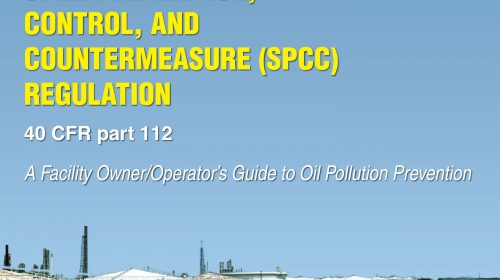After more than three years of the Environmental Protection Agency soliciting expert advice and public comment on issuing a proposed rulemaking potentially expanding the petroleum product spill prevention, control and countermeasure (SPCC) terms typical of concrete plant environmental permits, Administrator Andrew Wheeler has signed a final action establishing no new regulatory requirements under the Clean Water Act (CWA).
|
|
| Four years of rulemaking maneuvers and court actions led EPA to a point of leaving Spill Prevention, Control and Countermeasure guidelines stand as they are, applicable to the storage and handling of diesel fuel and other petroleum products. |
“EPA’s analysis concluded that current requirements for hazardous substance discharge prevention are protective of human health and the environment and, therefore, additional requirements are unnecessary,” he said. “Protection of our nation’s waterways is a top priority, and we will continue to use our many programs and tools to protect and respond to threats in our waterways.”
National Ready Mixed Concrete Association Compliance & Regulatory staff had closely tracked the rulemaking, and apprised officials of the suitability of existing EPA, U.S. Department of Transportation and Occupational Safety and Health Administration regulations addressing material exposure and spills. EPA proposals dating to 2015 had the potential to extend SPCC plans from petroleum products to other materials deemed “hazardous,” including admixtures and coloring agents. In that case, concrete producers would likely have been required to maintain a library of SPCC plans, adding to their plant permit compliance costs.
During the 40 years since Congress enacted CWA section 311(j)(1)(C), many EPA statutory and regulatory requirements have been established to prevent and address hazardous substance discharges. Based on a review of the existing programs, along with the frequency and impacts of reported CWA hazardous substance discharges, the agency determined that the current regulatory framework meets the requirements of CWA section 311(j)(1)(C) and serves to prevent, contain, and mitigate CWA hazardous substance discharges.
The final action complies with a February 2016 consent decree addressing CWA section 311(j)(1)(C) and stemming from a Natural Resources Defense Council-led lawsuit seeking a federal court order for EPA to pursue hazardous substance discharge measures through the agency’s rulemaking protocol. That suit was filed concurrent with the pursuit a broader SPCC regulation by EPA staff under the Obama administration.
